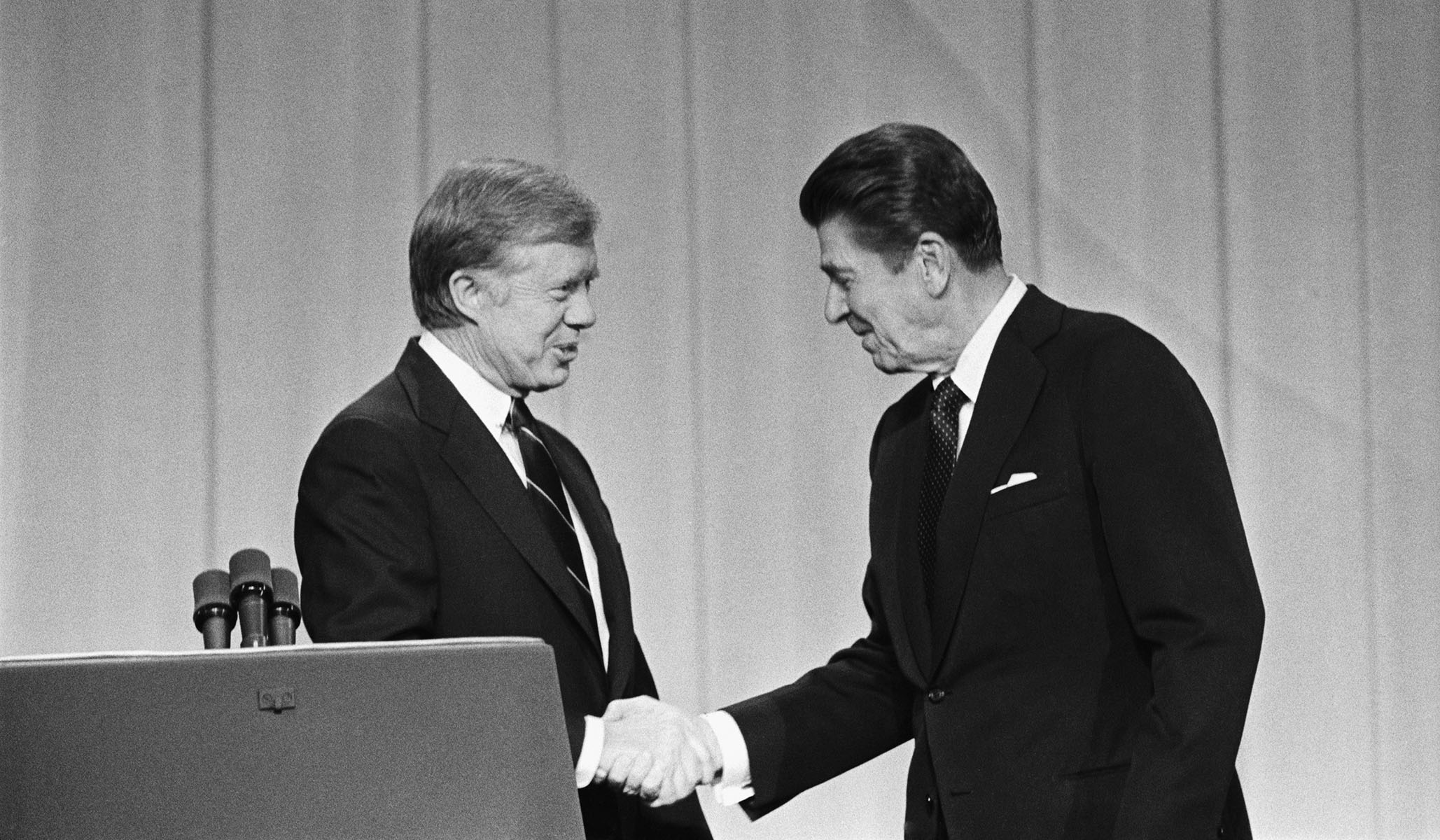


After seeing a post on social media contending that food and housing were cheap in 1980 — when the inflation rate averaged 13.5 percent, and the “misery index” that added the unemployment rate to the inflation rate hit 21.98 percent — our old contributor Avi Woolf observes that “so much of politics today is driven by a seriously misguided understanding of how our parents and grandparents lived.”
Way back when working on my first book, I realized how little I knew about the time period from the last years covered by my high school U.S. history classes (the Vietnam War, rushed through in a day or two before preparing for the final exam) to when I was old enough to have some sense of what was going in the world, roughly the mid-Reagan years. Each passing year adds more history; this past school year, my kids learned about things that were current events when I was around their age, like the closing years of the Cold War.
If modern history always seems to get short shrift in our nation’s history classes, perhaps we shouldn’t be surprised that plenty of young adults aren’t up on the details of the formative years of the Baby Boomers or Generation X. This leaves them susceptible to the argument that previous generations had it so much easier than they did. “Things were better then!” Eh, in some ways, yes, in other ways, no.
Sure, housing was cheaper, but that is partially because houses were considerably smaller. In 1980, the median size of a new home in the U.S. was 1,595 square feet. Today the median size of a new family home is 2,312 square feet. Yes, there is a housing shortage in many parts of the country, heavily driven by government zoning regulations on what kind of housing can be built and where. But that doesn’t mean that any previous U.S. generation ever found it easy to save up and purchase a new home. And remember, we’ve just emerged from a long stretch of historically low mortgage interest rates. By contrast, the mortgage rate reached 13.74 percent in 1980, and in 1981, the 16.63 percent rate, Freddie Mac’s largest recorded figure. Those allegedly lucky home buyers of the late 1970s and early 1980s were paying way more in interest than today’s homebuyers.
Throughout the 1970s and 1980s, about half of households and families got by with just one car. (Even today, about 40 percent of households have only one car or no car.)
Yes, the gas prices briefly glimpsed in Die Hard seem unimaginably cheap by today’s standards. But for periods in 1973 and 1979, it was difficult for Americans to find gas at any price, and the government limited which days of the week you could fill up your tank based upon whether your license plate ended in an even number or an odd number. People got into fistfights at gas stations during the summer of 1979, as gas stations ran out of supplies. Ah, the good old days!
Yes, it is bad that the average price of a new car has now surpassed $50,000. But this is also a reflection that today’s cars are significantly safer and come with a lot more bells and whistles than the gas-guzzling behemoths of the 1970s and into the 1980s. Yes, cars were more affordable then, but your odds of getting a lemon were much higher.
Sure, there are some fans of 970s and early 1980s automotive, er, legends like the Chevrolet Chevette, the AMC Pacer, the Chevy Vega, and the AMC Gremlin. Then again, if you’d like to drive one of those explosive Ford Pintos, be my guest. History shows that Pinto sales were booming, and then the cars started booming as well.
Americans spending on food — proportional to our income — has actually declined dramatically since 1960, according to the U.S. Department of Agriculture. When pining for the good old days, we ought to remember that a generation or two ago, there was way less selection at your local supermarket. And Americans simply ate less a generation ago; you can see evidence of this in the obesity rates.
And of course, even if housing and food were seemingly cheaper then, most Americans’ incomes were significantly lower than they are today.
There are trade-offs. Consumer electronics like televisions, computers and microwave ovens are considerably cheaper now than a generation ago. One big culprit for why people believe the cost of living is astronomically more expensive than a generation ago is the cost of higher education, which has risen well above the rate of inflation for two generations.
I liked this observation from Liz Mair, reacting to Nikki Haley’s declaration that life used to be simpler. “I have a theory about why people have nostalgia for ‘simpler’ times that weren’t simpler. In hindsight, we totally know how we’d navigate those times because we already did it. We don’t know how to navigate now, because we’re actively trying to do it in real time.”
